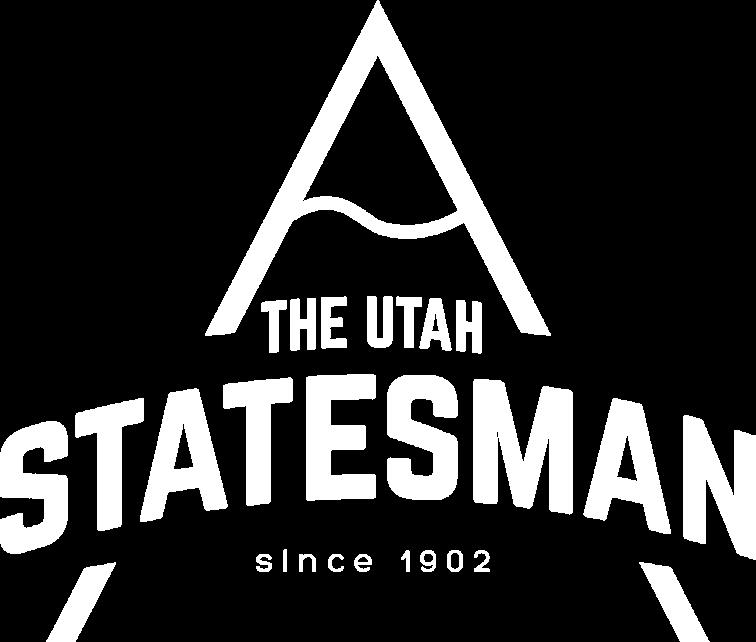




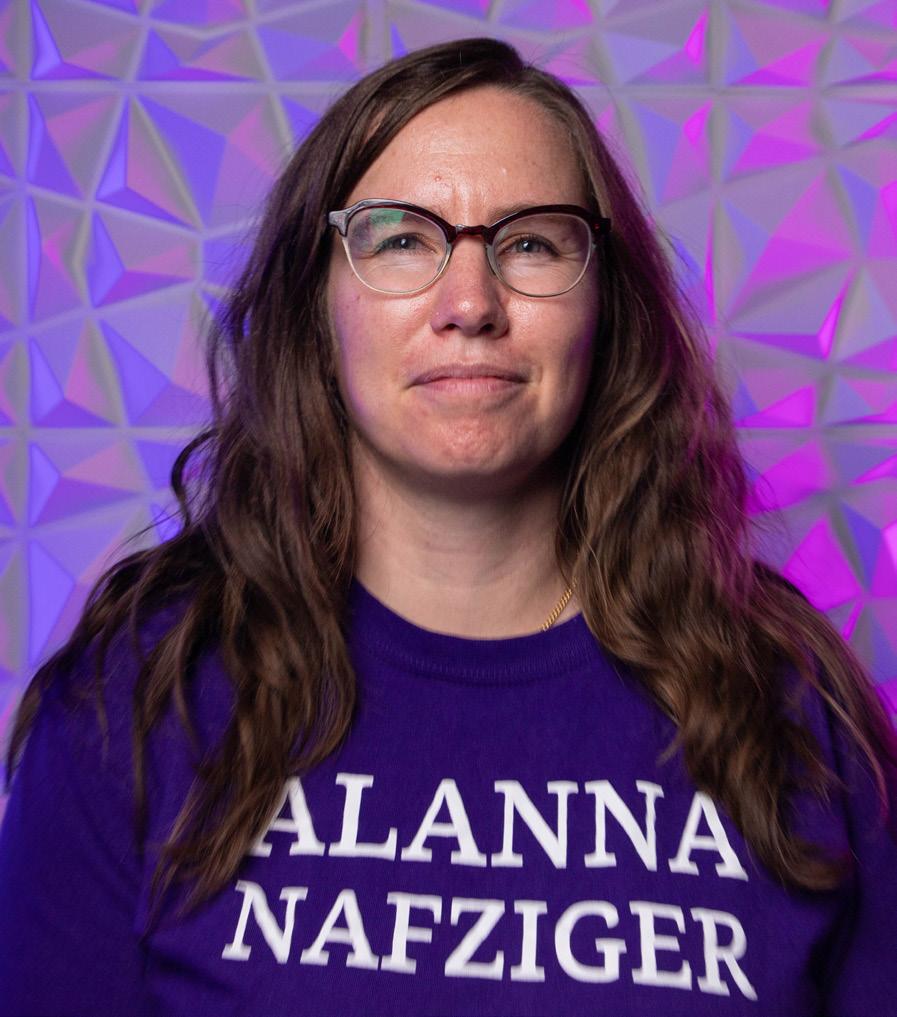
If you had to describe Logan in three words, what would they be?
Beautiful. I think changing and traditional.
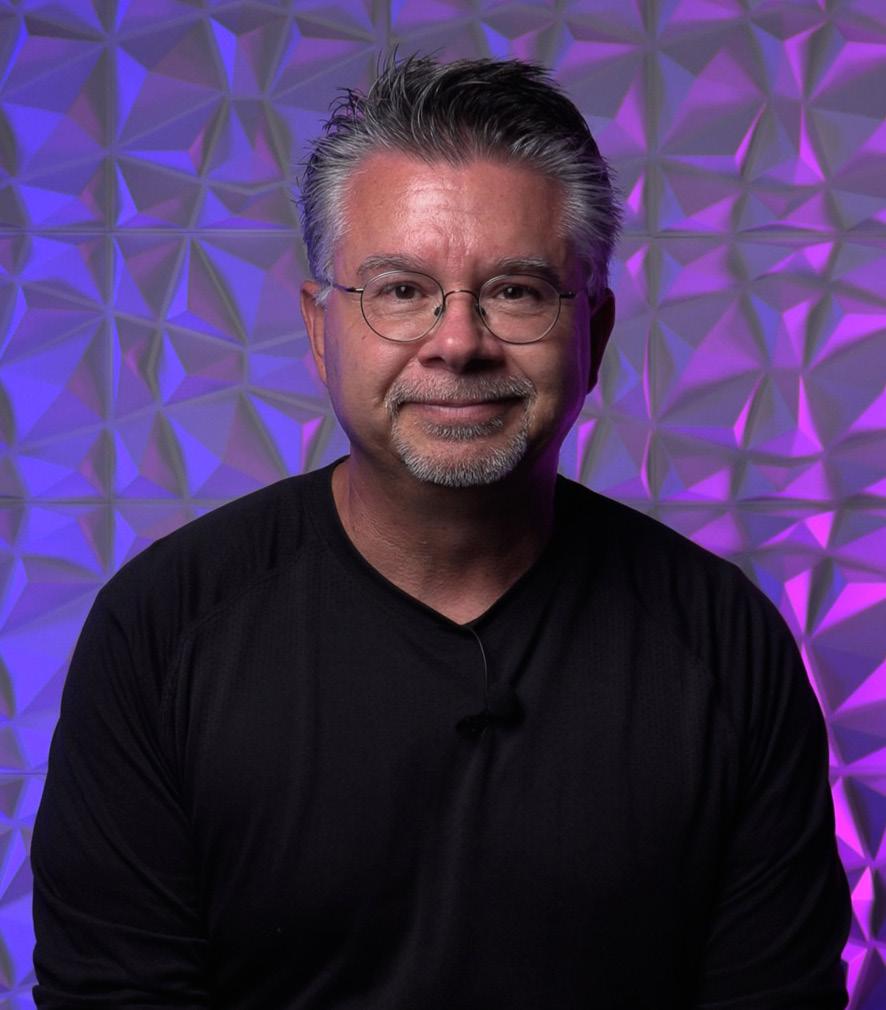
Can you introduce yourself to USU students?
My name is Alanna Nafziger. I’m running for Logan City mayor. I’m actually a two-time USU alum. I graduated from USU with my bachelor’s in sustainable agriculture and then just recently graduated with my master’s degree in landscape architecture. I’m running for mayor to really put those skills into the service of people in Logan. I want to see some improvements, and those include transparent and responsive government and then more thoughtful development so that the way we’re developing is really reflecting the needs of the community. Then we can start to create this collective legacy of natural resource stewardship and protection for our public open spaces.
What do you do when not running for office?
That’s a great question too. So, I really, since I just barely graduated, I actually launched directly into this campaign. So, that’s most of what I have been doing. But I really enjoy hiking. I like hanging out with my dog, and then I’m really focused on a couple of different efforts here in the community, and I like to do those, even aside from campaigning. So, I really just think building community and enjoying the place that I live.
What makes you stand out from your opponent, and why should students vote for you?
I think that I have a really unique skill set that I’m offering people here. Since my background is in landscape architecture, I have a lot of urban design or urban planning, and my thesis work was actually around affordable housing and urban planning in Logan. Since we’re having such issues with housing and affordability, I think that skill set’s a really incredible thing that I am offering to people in Logan, and that really differentiates me from my competitor.
If you had to describe Logan in three words, what would they be?
Beautiful, opportunity and accommodating.
Can you introduce yourself to USU students?
My name is Mark Anderson, and I have lived here in Logan most of my life. I’ve lived in other countries and other parts of the United States as well, but I did go to school here at Utah State. I have a bachelor’s and a master’s degree in history from Utah State. I enjoyed my time here — great education. I met so many wonderful people, professors, students and employees here as well. So, I’m born and raised here in Cache Valley, and my wife and I own two businesses here in Logan: Anderson’s Seed & Garden on Center Street and Logan Extermination too. So, we have a services division, which is our pest control and fertilizer division, as well as our retail store downtown. The city and the community is so important to us, and we’ve been a vital part of the community our entire business lives, as well as my whole life. It’s a very important part of what we do as a business and especially as a family. I have two kids who go to school at Utah State right now. My daughter just graduated from Utah State last year with a degree in mechanical engineering. We have a wide range of interests and fields of study in the Anderson family.
What do you do when not running for office?
Hiking and backpacking are some of my favorite things to do, especially with my kids right now. I love sports. I love to participate in sports, but also to watch spectator sports for sure, and gardening. I have a very large garden. I enjoy growing things, and the best part of growing things is eating them and also giving them away and sharing them with other people. I love sharing the harvest out of my garden. It’s
quite rewarding. Since I do have so much school background, reading is probably my very favorite thing to do. I will read and consume just about everything that I can find. However, my all-time favorite book would have to be the “Name of the Wind” by Patrick Rothfuss. I am a big fantasy fan.
What makes you stand out from your opponent, and why should students vote for you?
What makes me different from a lot of other candidates, whether they’re running for city council or for mayor, is my background and my experience. Not only do I have a business background, for mayor the responsibilities are kind of mundane when you think about it. You deal with employees, you deal with staff, you deal with budgets and how to spend money, and you’re a cheerleader and PR person. So you’re trying to promote the city. Those are all skills that I have, that I’ve learned and I’ve cultivated, and I’ve developed over 30 years of owning a business. Unfortunately, I know how to fire employees as well as hire employees and find the best employees that can actually do the work that needs to be done. I know how to budget. I know how to create a budget. I know how to make sure and stay within that budget. These are critical skills that you have to have to be a mayor. One of my favorite things is to promote our business. I feel like Logan City needs to promote itself a lot more. Being that public relations person will be very high on my list of things to do. My skill set lends itself perfectly to this position as running for mayor.
By Jayke Martin STATESMAN REPORTER
Utah lawmakers approved a new set of congressional maps on Oct. 6 after a state judge ruled the old ones unconstitutional. The changes, which reshape political boundaries across the state, have reignited debate over fairness, gerrymandering and whether Utah’s political districts reflect their communities.
The new maps come after years of legal battles over Proposition 4, a 2018 voter-approved law aimed at reducing political gerrymandering. Some say the new map meets those rules, while others argue it still favors one party.
Redistricting is about redrawing the boundaries that decide which areas of the state belong to each congressional district and who represents those communities in Washington D.C.
“Essentially, in 2018, they created a law that made it so political gerrymandering wouldn’t be possible,” said Emma Miller, a senior studying law and constitutional studies at Utah State University. “They deemed that the current districts we have didn’t follow that, making it unconstitutional by the Utah Constitution, and so, the judge said that we needed to redraw all of our districts.”
Miller said the latest map was drawn under a tight deadline, needing completion by Nov. 10 following the court’s decision, with lawmakers tasked with meeting fairness standards while keeping communities together.
Lawmakers chose map C, one of several options.
Supporters say it preserves more communities and follows population balance rules. Critics argue it still gives Republicans an advantage. Map C divides Salt Lake City across several districts but is slightly more competitive than Utah’s previous map.
“It is really difficult to be able to create districts in Utah that fully represent everything. One of the issues that I know they were running into is trying to make it so that each district included parts that were rural and also parts that were more urban,” Miller said.
Miller also noted party registration in Utah can make it hard to know who leans Democratic or Republican.
“Most of the students I’ve talked to who are Democrats actually are registered Republicans because by registering as a Republican, you can have a say in the primaries,” Miller said.
Michael Lyons, an emeritus professor of political science at USU, added perspective on the overall map.
“It’s still a gerrymander,” Lyons said. “But it’s a less blatant one, and it’s also a more competitive map than before.”
Lyons also mentioned the map still has many requirements to meet, including whether it complies with Proposition 4 standards
“If lawmakers don’t comply with the intentions of that initiative, the courts could end up drawing their own maps,” Lyons said.
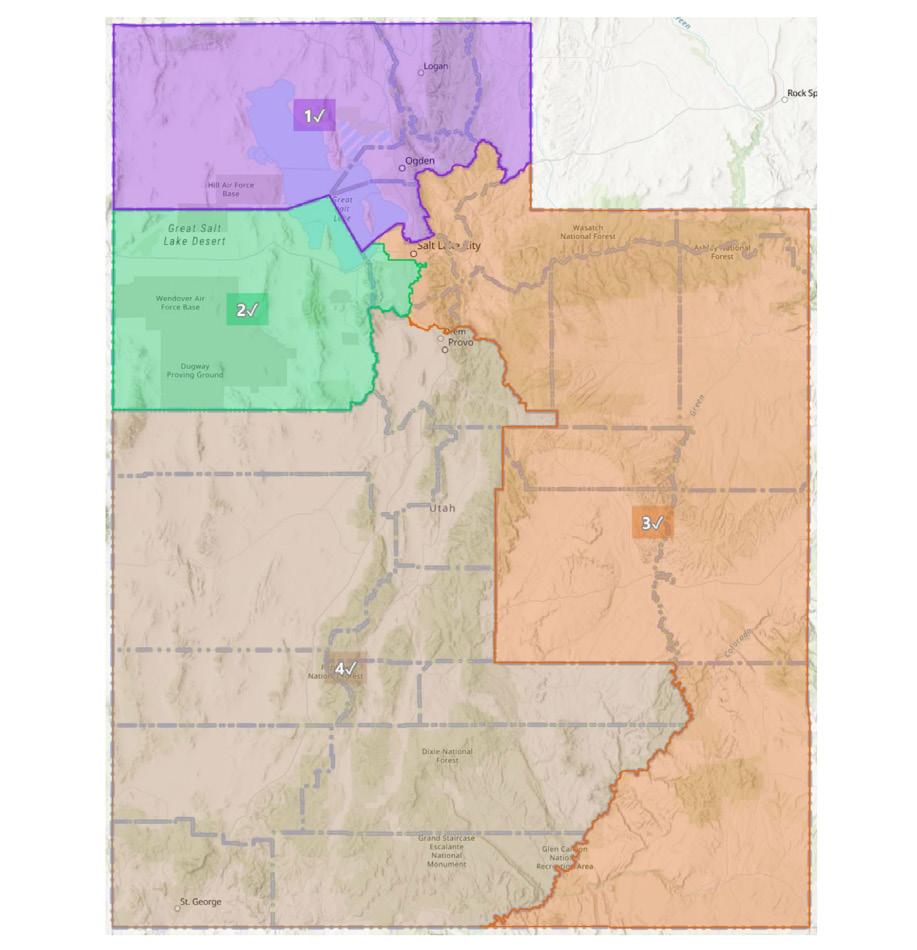
For students, the issue goes beyond party lines. Miller said even if boundaries in northern Utah haven’t shifted dramatically, understanding how representation works is still important.
“Our district isn’t one of the most affected compared to others,” Miller said. “But this is a good time to start learning about how these changes could influence the state and to follow credible, nonpartisan sources.”
Both Lyons and Miller noted redistricting can shape not only who represents Utah but also voter engagement. They said for many young voters, the new maps are an opportunity to pay closer attention to how political decisions are made at the state level.
“Even if it feels far removed, this kind of thing shapes how we’re represented,” Miller said. “It’s worth paying attention to, especially for students who are just starting to vote and get involved.”
The new congressional map still requires judicial review. However, how the lines are drawn could affect Utah politics for years — deciding who represents communities and how voters are represented. Lyons and Miller agreed this shows even small changes on a map can have a big impact on the state’s democracy.

Jayke Martin is a junior studying journalism and minoring in theater. She loves reading and meeting new people.
— jayke.martin@usu.edu

By Kenadie Jackson STATESMAN REPORTER
For the first time in the history of the state of Utah, there is a confidential search for a new university president. The new Utah Code Section 53B-2-102 is being actively practiced for the first time on the grounds of Utah State University.
The legislation has been in effect since March 17 and lays out an outline for how higher education presidents shall be appointed.
“A search committee shall: respect and protect candidate confidentiality; and through closed executive sessions review prospective candidates,” the legislation states.
The Utah System of Higher Education released an outline of the committee in a newsletter.
“The USU Presidential Search Committee is co-chaired by Board of Higher Education Vice Chair Steve Neeleman and USU Board of Trustees member David Huntsman. It is comprised of representatives from the Board of Higher Education, USU trustees and institutional stakeholders, including faculty, staff, students, administration, alumni and community members,” the newsletter states.
USHE announced the search formally began in May, when the search committee was appointed. From that day forward, the committee has worked to collect feedback from students, faculty, staff, alumni and community members through listening sessions,
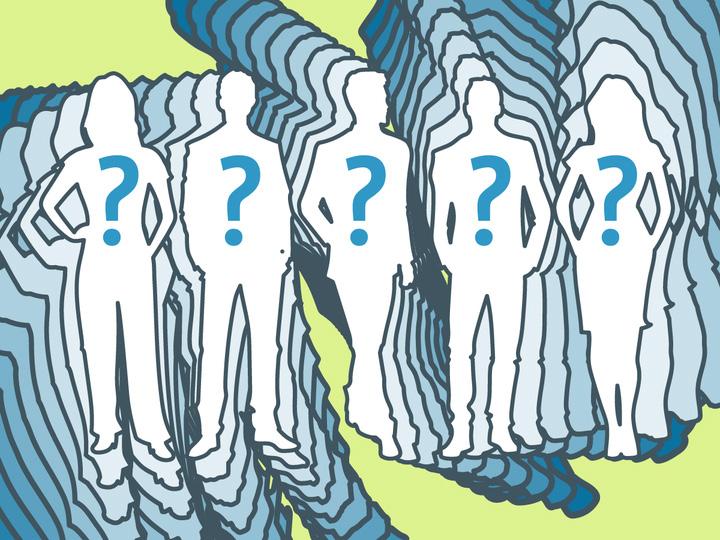
online comments and anonymous submissions. This information was used to create the “Presidential Leadership Profile” in July, which includes a rubric for the qualities and priorities the next USU president must embody.
The profile states USU holds a unique responsibility to serve rural communities and extend educational opportunities across the state, so the next president must show “deep appreciation for Utah State’s critical role as Utah’s only land-grant institution.”
“Our land-grant mission has so much to do with serving the people of Utah — really helping those
rural communities throughout the state,” said former USUSA President Matt Richey, who sits on the committee as the student representative. “The focus on the land-grant mission has been a significant part of our discussion.”
This year’s presidential search is the first in Utah to be conducted under new confidentiality guidelines.


Kenadie Jackson is majoring in journalism and communications. She is from Draper and loves anything active and outdoors. Watch out for her name to be Kenadie Ferraro in November when she marries her best friend.
— kenadie.jackson@usu.edu
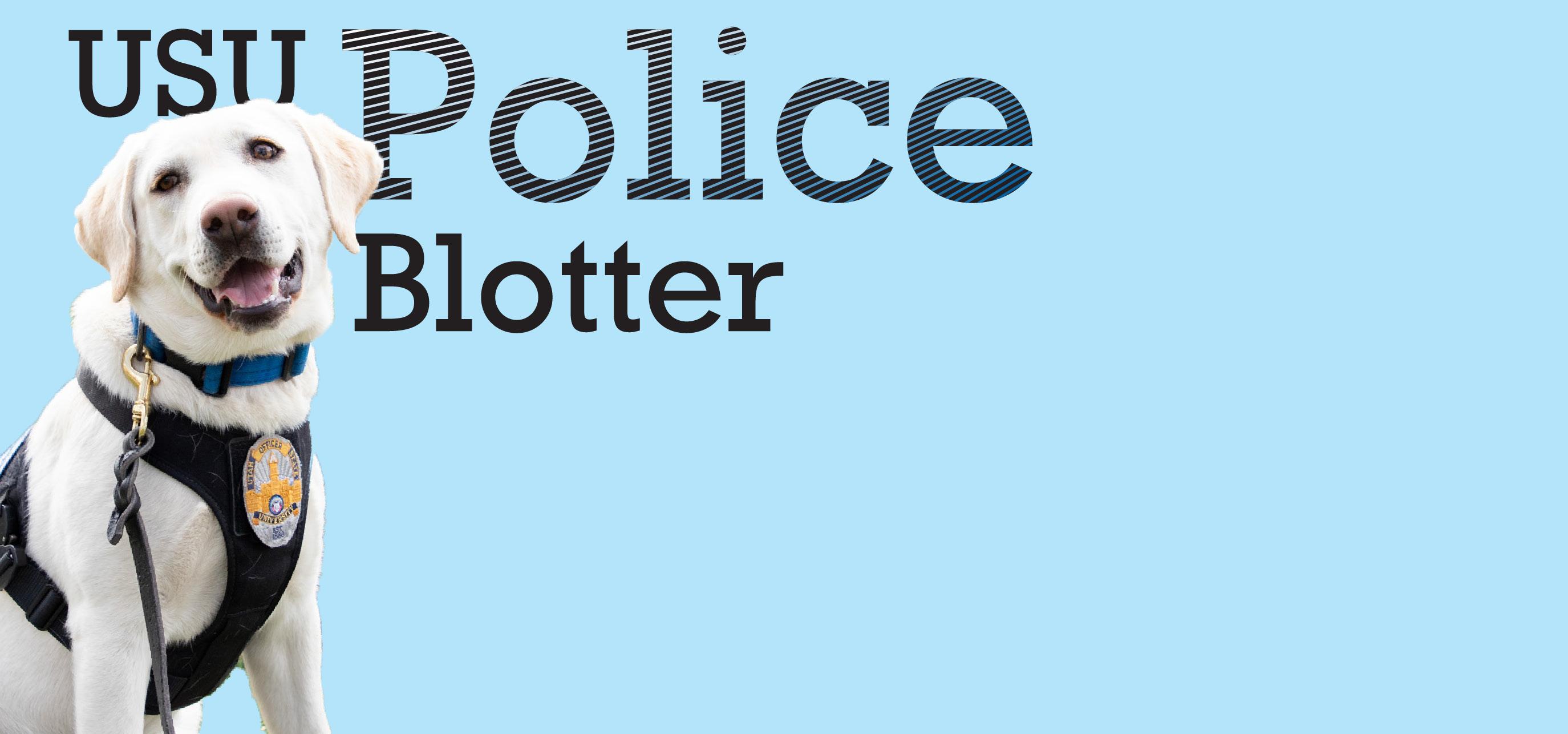
October 7
Officers responded to a call for suspicious narcotic activity at Richards Hall after a report of a suspicious odor was made. The officers investigated the area and did not detect anything of suspicion.
October 8
Officers responded to individuals possibly attempting to skateboard on campus property. Upon arrival, officers did not locate the reported individuals at the location of the initial report.
October 8
USUPD officers and K-9 Sage took part in a presentation for two first grade classes as the students learned about first responders and community helpers. About 40 students participated.
October 11
Officers were dispatched to Aggie Legacy Fields on report of medical call for service regarding an individual who was injured playing sports. Logan emergency medical services arrived on scene and assessed the injured party who declined transport and was released to a responsible party who would provide transport to Logan Regional Hospital.
October 11
USUPD was dispatched to Aggie Village in regards to a report of shots fired. Officers arrived on scene and observed a military unit performing a gun salute in the cemetery for a funeral service.
By Sam Isaacson STATESMAN SENIOR REPORTER
The Great Salt Lake has been at unhealthy water levels for over a decade now, with the National Oceanic and Atmospheric Administration saying it reached a historic low of 4,188.5 feet in 2022.
The lake levels rose in 2023 and 2024 because of above-average snowpack, with the Utah Division of Water Resources saying the record snowpack in 2023 caused the lake to rise 5.5 feet. While this brought the lake closer to a healthy level, it did not provide a permanent solution.
Utah’s Grow the Flow, an initiative of Conserve Utah Valley dedicated to conserving land and water, said the lake has a cycle that helps create a good snowpack for Utah. The lake and Utah’s snowpack rely on each other. When one is lacking, it causes damage to the other, which can set the cycle into a negative spiral.
A report written by Scott Hotaling, assistant professor of watershed sciences at Utah State University, states the peak snowpack Utah sees every year has dropped by 16% since 1979, and it is expected to continue dropping in the future.
To combat the continual shrinking of the lake, Gov. Spencer Cox signed the GSL 2034 charter. This charter has pledged $200 million in private commitments to restore and protect the lake.
Cox said he doesn’t want to see the lake fail.
“Across the world, saline lakes are in decline. Utah will be the exception. The Great Salt Lake is our lake, our heritage, and our responsibility,” Cox wrote about the charter.
The goal the charter is setting is to reach healthy levels by 2034. In an article published on the Governor of Utah official website, it was stated the charter’s goal year for healthier levels falls on the same year Utah will once again host the Olympic and Paralympic Winter Games. To meet this goal, it would require reaching 4,198 feet of elevation for the lake in 9 years, which is about a 6.4 feet difference.
The charter also mentions the work that has been done already to help the lake.
“In the past three years, crews removed thousands of acres of water-hungry invasive plants, producers launched hundreds of agricultural optimization projects, thousands of secondary water meters were installed to help communities track and conserve, voluntary water leasing expanded, and lawmakers passed targeted legislation,” the charter states
The charter said the result from all of this work was more than 288,000 acre-feet of water now dedicated to the lake that wasn’t there three years ago.
Janice Brahney, associate professor of environmental biology chemistry at USU, said it is important to keep the lake at a healthy level to keep the sediments on the playa, which is the flat dry lakebed surrounding the lake, and out of the air.
“Dust has a lot of negative health outcomes, not just because of the potential composition of the dust, but dust in general is unhealthy for people,” Brahney said. “It’s especially unhealthy when it gets into the small grain sizes.”
Brahney also said the unhealthy lake levels could cause negative economic impacts for Utah as well.
“If the lake becomes too saline, then the organisms that live in the lake, like brine shrimp, can’t survive, and the brine shrimp population is part of the economy in Utah,” Brahney said.
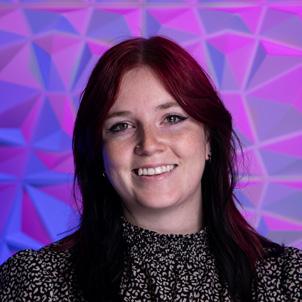
Sam Isaacson is senior studying journalism with a double minor in art and psychology. She is passionate about human rights, animal rights and climate change.
— sam.isaacson@usu.edu
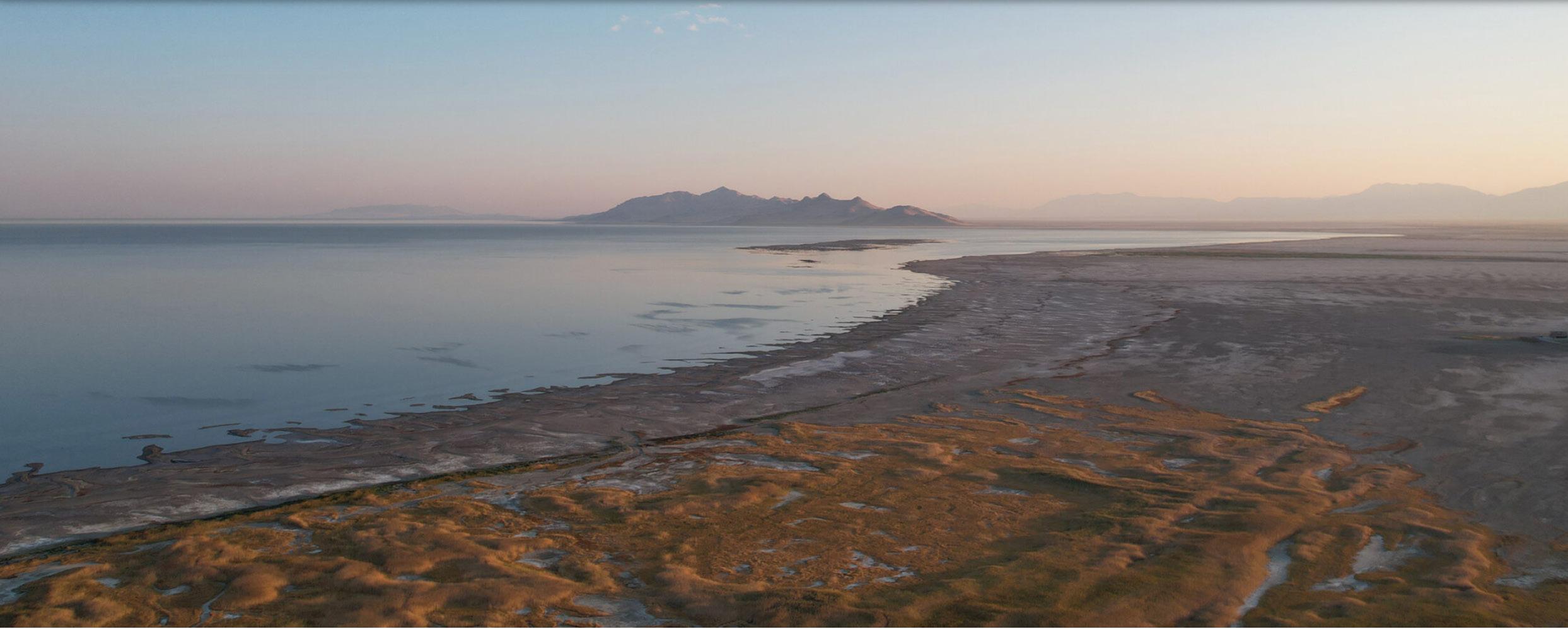

By Essence Barnes STATESMAN REPORTER
The Logan River has flown through the center of Cache Valley for thousands of years, providing generations of residents with a source for scientific research, irrigation, habitat enrichment and recreation. However, recent discussions surrounding allowing the city to develop land further into its riparian areas could put these natural benefits at risk.
Proposed changes to City of Logan, Utah Ordinance No. 25-11 were called for by the Logan Community Development Department. The department aims to shrink the previously established 100-foot setback to 25 feet, allowing development to occur roughly a flagpole’s distance away from the river’s edge.
“Logan has already built a lot in our riparian areas,” said Patrick Belmont, professor of watershed sciences at Utah State University, in an interview with The Utah Statesman. “We put a lot of homes in places that have degraded habitat, that contribute pollution to the river and that are at much higher flood risk.”
The department is requesting these changes as a way to re-clarify setback standards, as roughly 90% of properties along the Logan River were built before the 100-foot setback rule was in place and therefore violate current regulations.
The Statesman reached out to Logan director of community development Mike DeSimone, but they did not respond to a request for a comment.
Logan residents have voiced their concerns over these proposed changes both online through petitions and
in person during city council meetings. Among them is Griffin Gallagher, an environmental studies and philosophy major at USU.
“This is not something I think enough people are talking about,” Gallagher said in an interview with the Statesman.
“I thought there needed to be a voice from a younger generation there because we are going to be facing the downsides of what could happen because of this.”
In his public comment, Gallagher urged the council to reject the changes to the ordinance, citing his past research sampling species from Logan River as support.
“My group recorded an average of 15 visibly different species that we could see with just our own eyes, not including microorganisms,” Gallagher said in his comment to the city council. “We learned that since the road is already so close to the water, when the salt from the road melts too close to the river, we see many of these little creatures’ populations decline.”
He went on to say these changes will have a direct impact on most organisms in Cache Valley, including its future generations.
“By going through with this, you will destroy the natural habitat that supports the entire Logan ecosystem: the insects, the birds, the fish, all of these things that directly affect us,” Gallagher said.
At the end of his comment, Gallagher said he had also assisted in helping collect signatures for a petition to protect the Logan River and its 100-foot setback. At the time of publication, this petition has over 700 signatures. Belmont also spoke at the council meeting and said he has seen policy oftentimes overlook science and doesn’t want to see it happen in this case.
“Once people start building there, we just won’t get that habitat back,” Belmont said in his interview with the Statesman. “We will lose a lot of our riparian area, essentially forever.”
According to Belmont, the 100-foot setback not only protects the river from development but development from the river.
“It’s healthy for rivers to flood — that’s a natural part of their process,” Belmont said. “It brings nutrients up to the flood plains which supports a lot of plants which are important for wildlife.”
While some land within the setback has already been developed, Belmont says those and possible future developments are at risk of flood damage.
“We’ve seen potential for significant floods just in the last couple of years,” Belmont said. “Insurance companies are picking up on that, and they’re starting to say, ‘We’re not going to cover people in these risky areas.’”
Belmont said cities like Ogden have expanded development further into their riparian areas and have now had to spend time and money attempting to restore it.
“We don’t want to be in that position in Logan,” Belmont said. “We can learn from their mistakes.”
For Belmont, it is a matter of taking a step back and looking at how all of the problems faced today are connected to a similar exploitative mindset.
“Let’s not give into this bigger, faster, more, all the time mentality that’s created so many other problems that persist and get dumped on future generations,” Belmont said. “Problems just don’t get solved that way.”
Gallagher and Belmont encouraged both citizens and students to get involved by voicing their concerns to the community and the city council.
“We have to take time to engage in our democracy,” Belmont said. “We have good-hearted people in our city council, and they need to hear from a lot more people.”
This issue was tabled at the most recent city council meeting but will be discussed again on Oct. 21. It will not be a public hearing or open to comment.
“Protecting our riparian zones and maintaining a habitat for these animals and these ecosystems is eventually going to come back to us living a better life,” Gallagher said in his interview with the Statesman. “We all have different wants, but it’s a matter of coming to an agreement and looking down a road further than just your own.”

By Dylan Moore STATESMAN REPORTER
Inside the Utah State University
Nora Eccles Harrison Museum of Art, the glow of paper candles and rows of marigold cutouts greeted visitors during Community Art Day.
This month’s theme, inspired by Día de los Muertos, brought families and students together to learn about the Mexican holiday through hands-on art and cultural displays.
Though attendance was modest, the event drew a mix of museum regulars and first-time participants who wandered between the ofrenda display and the art tables, where guests could paint sugar skull jars to take home.
Shannon Erickson, director of learning and engagement for K-12 and community programs at the museum, said the event has been a long-running tradition.
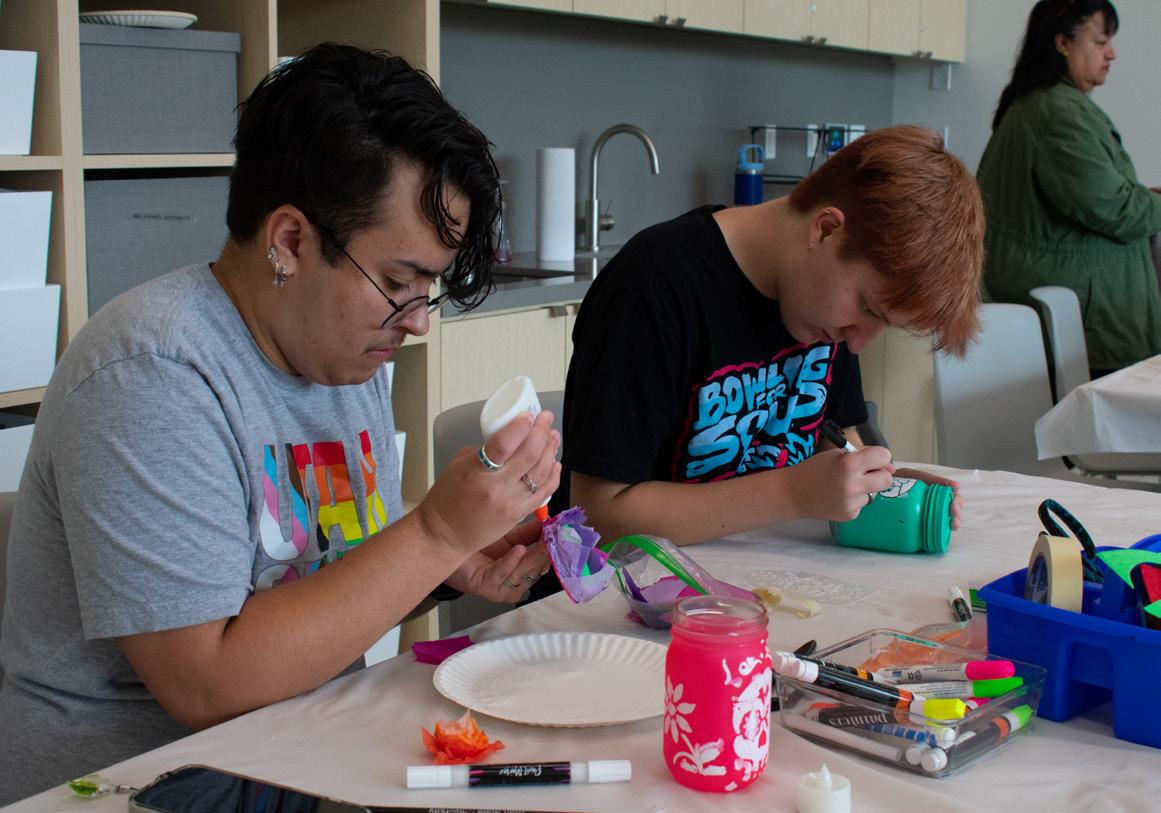
“It’s on the second Saturday, and it has happened rain or shine, even during COVID. It’s never been canceled,” Erickson said.
Erickson said this month’s early celebration of Día de los Muertos was chosen to coincide with the museum’s event schedule while honoring a long-standing Hispanic tradition.
“The altars, or ofrenda, are tributes to those who have passed on,” she said. “They include water, food, air and fire — those four things had to be there.”
Nearby, a colorful altar stood near the entrance to the main gallery. Coordinator of exhibitions and collections for the museum Chloe Camp oversaw the ofrenda’s design and setup. She said the museum aimed to keep the display authentic while adapting it to fit the indoor gallery setting.
“Because we’re an art museum, we have to alter a little bit. We can’t do real candles, so we do the fake candles,” Camp said. “We can’t do real flowers, so we made paper flowers and butterflies, which are all symbols of Day of the Dead.”
Camp said creating the altar required extensive research and help from colleagues.
“We tried to include the classic elements,” she said. “The papel picado symbolizes air, the candle symbolizes fire, the plate of salt represents earth and the water represents life.”
The museum simplified the structure to three tiers, symbolizing the earth, heaven and the underworld, to make it easier for visitors to view and understand. Camp said the display is part of an ongoing tradition the museum plans to continue each year.
“This is, I believe, our fifth year doing it,” Camp said. “We plan to keep it an ongoing tradition. It brings people together to think about their loved ones and
this time of year a little bit differently beyond just Halloween.”
In the nearby Wanlass Center for Art Education & Research, visitors painted skulls on glass jars, adding lights to mimic the glow of candles. Erickson said the project aimed to connect creativity with reflection.
“We’re painting sugar skulls on a jar that they can drop a light in. It provides the light in the traditional sugar skull decorating tradition from Día de los Muertos,” Erickson said.
Erickson said future Community Art Days will continue to pair hands-on activities with partnerships across campus and in the community. Upcoming events include “Signature Search” on Nov. 8, a collaboration with the Cache Humane Society, which will feature adoptable dogs and donation drives for the shelter.
In December, “Symbols of Home” will partner with the Logan Library, followed by “Weave It Together” in January with Jump the Moon, a local nonprofit focused on inclusive artmaking. February’s “Love Our Air” will feature clean air poster contest winners, and in March, visitors can “Create a Cryptid” with Stokes Nature Center.
The final event of the academic year, “Pour It On,” will take place in April in partnership with the Mount Logan and Cache Symphony orchestras. From May through September, Community Art Days will move to the Cache Valley Gardeners’ Market each month.
“We try to make sure everyone feels welcome,” Erickson said. “It’s for anybody — 0-99.”
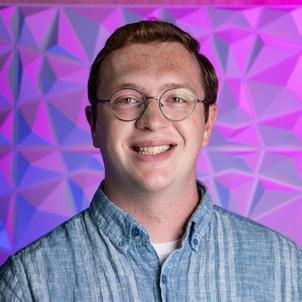

Dylan Moore is a junior majoring in political science. He always loves going on outdoor adventures and cooking.

Cal Talbot is the host of “Cal’s Jams and Jargon,” a weekly deep dive into an artist and what they create. Cal selects an album a week and chats about their content, messages and any other jargon that might go along with it! Tune in Thursdays at 1 p.m. on Aggie Radio 92.3 FM!


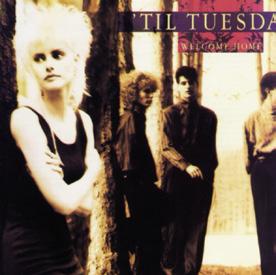

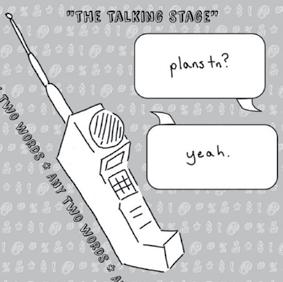
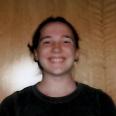
Taking what’s Not Yours TV Girl

Forever is a Feeling Lucy Dacus

Coming Up Close ‘Til Tuesday

Your New Cuckoo The Cardigans

The Talking Stage Any Two Words

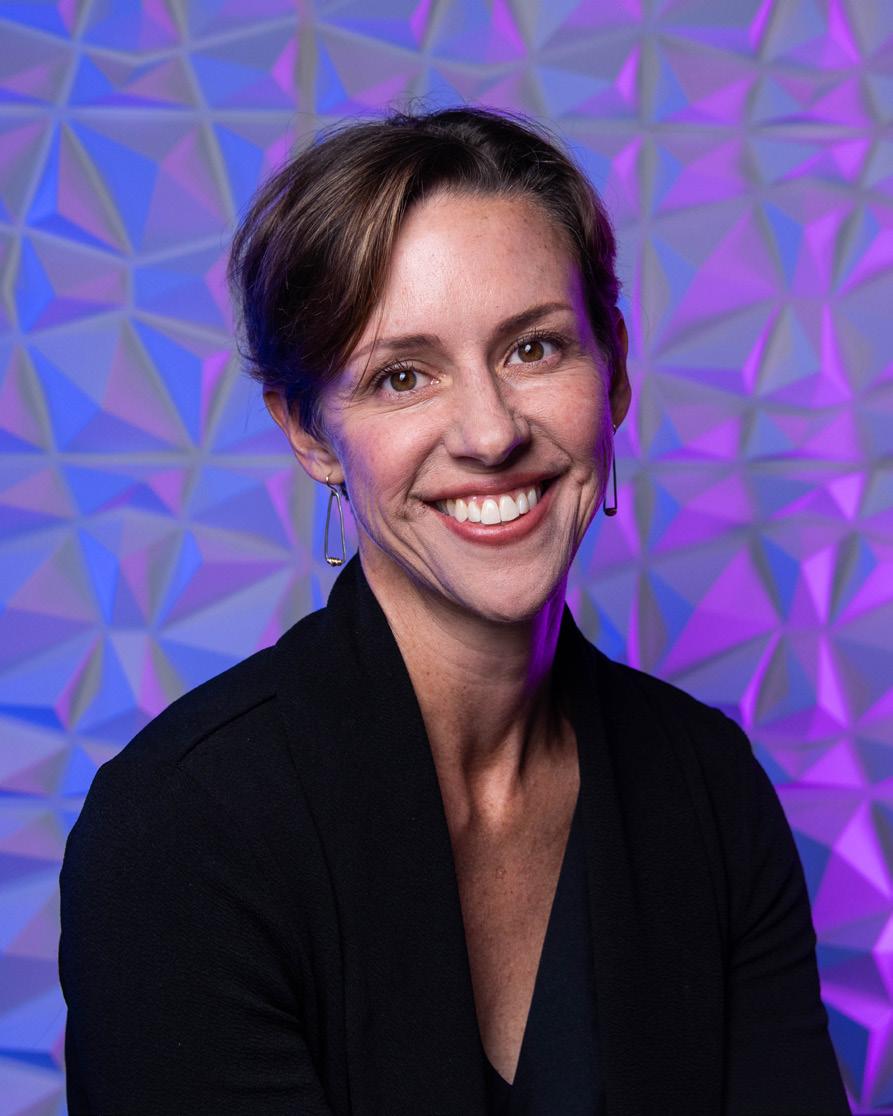
Can you introduce yourself to USU students?
Hi, I’m Katie Lee-Koven, and I am running for Logan City Council. I look forward to serving you students in this role. I am currently — in my day job, I work at Utah State University as the director for the Nora Eccles Harrison Museum of Art on campus. So, hopefully you’ve been there. And my free time — I have served on various committees for Logan City Council or for Logan City, the Public Art Committee, the General Steering Committee and other things. So I feel really well-equipped to take on this role.
What do you do when not running for office?
Well, I have a nine-year-old, and she keeps me busy, coaching her basketball team or running her to soccer practice, serving on the community council there. But also as the director for the art museum, we have a lot of things happening outside of normal hours. We had the Dock Sessions we just launched, which is a music concert series on our loading dock. Hopefully you’ll hear more about it. We’ll have another concert coming up in October. So, there are a lot of fun evening things that we do at the museum that keep me busy as well. I also enjoy running on Logan trails and enjoying those and enjoying everything Logan has to offer us.
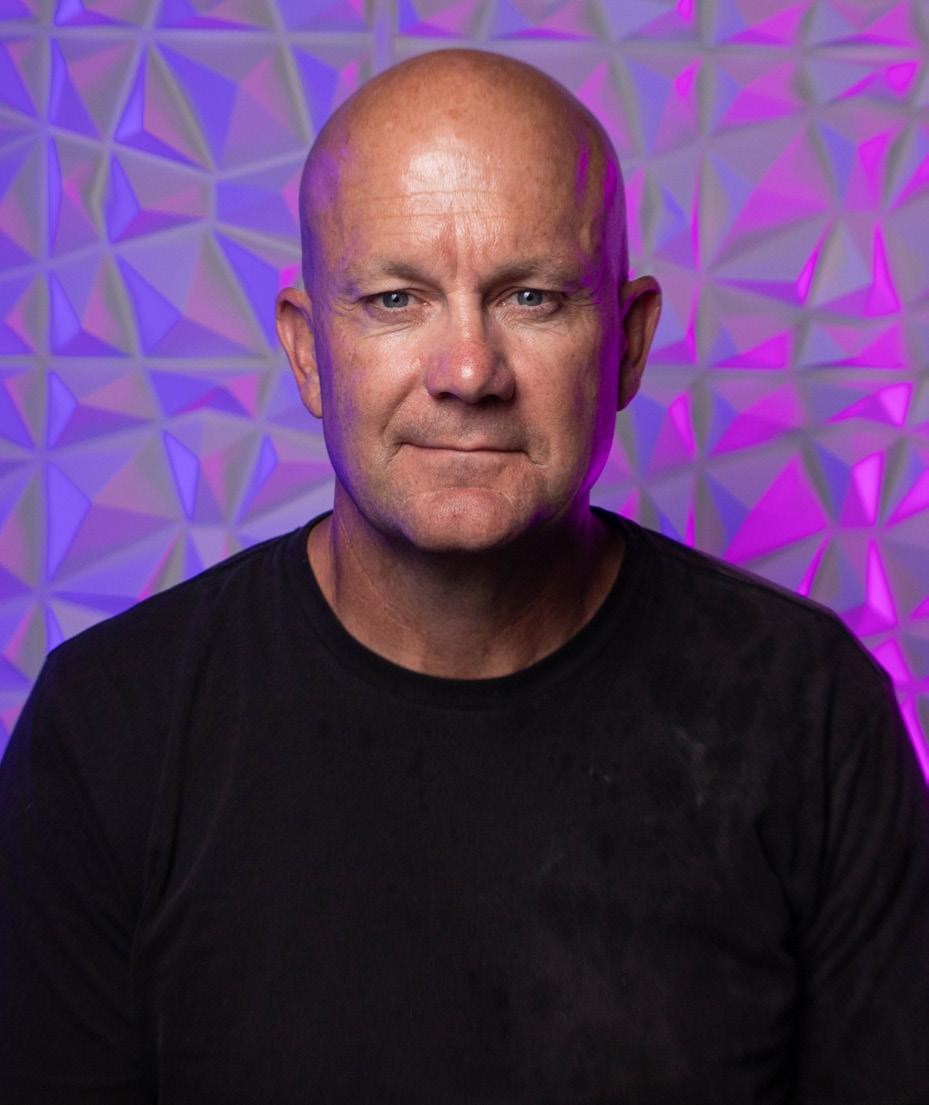
Can you introduce yourself to USU students?
Hello, everybody. My name is Brian Seamons. I’m running for city council. I’m a native of Cache Valley. I was born and raised in Hyde Park, went to Skyview, and I live on the Island area that’s just below Cliffside. I met my wife up here at Utah State. I studied economics, but I’m a builder now. Primarily, I build student housing, so I spent a lot of time up in this area. I have three sons: 21,19 and a seven-year-old. Kind of a funny story: The sevenyear-old was planned, the 21-year-old wasn’t, so kind of counterintuitive of what you would expect. But anyway, my biggest worry and the reason I’m running for city council is that I’m worried about the cost of living. You know, generally, that’s a worldwide problem, but it would surprise you how our local policies and local government affect that, and I see it every day as a builder — the ways that we administer housing and roads and taxes, property taxes, sales tax, things like that — how much that affects our lives. And you wouldn’t necessarily notice that, or realize that, everybody tends to pay attention to the federal government and what they pay on their, you know, to the IRS, but they don’t realize so much what they pay on property tax. Now, I know that that doesn’t affect you guys so much right now, but it will, and it’ll be important to you, but it does in other ways, and so I think I bring an interesting or an experienced perspective to city council if I were to be elected, and I would really appreciate it if you all would take the time. Typically, you guys don’t vote very much, or it’s not a very high percentage, and I understand that maybe that’s because you are
What makes you stand out from other candidates, and why should students vote for you?
I think I’m uniquely positioned in terms of the current volunteer roles I have with Logan City and the relationships I have built there as well as the relationships I have at Utah State University. You know, Utah State University is a huge part of the economy here in Cache Valley, and it’s also a huge part of just the day-to-day experience of living in a college town, and so I want to be able to facilitate better opportunities between Utah State University and Logan to support the student experience, as well as thinking about the impact that USU has on our local economy.
Why should students care about who is on city council?
If you take the bus, if you walk down the sidewalks to go to the grocery store, if you use the trails in Logan City, if you want clean water and your trash and recycling picked up — these are things that Logan City provides, and this is where you’re living for four years or maybe more. So, you can really notice that impact if you are living somewhere and there aren’t nice sidewalks to get from A to B — or bus service. So, I think it’s really important, and students actually can have a larger voice in their local elections.
registered at home. Maybe you’re not going to live here long term, but it would be very important if you stayed involved, or you were involved, and you took the time to vote. So, thank you for the time and effort you put into listening to this today.
What do you do when not running for office?
I only build. Also, I’m very active in my church, and not that it really particularly matters to an election, but I served a mission for the LDS church in Chicago, and I remain active in my church and spend a lot of time with the youth camping, fishing and things like that, so that seems to be my favorite spot to be.
What makes you stand out from other candidates, and why should students vote for you?
100% is that I’m a builder and that I live in the world, I work in the world, that’s very important to a lot of you, trying to find places to live, wondering about how you’re going to afford a house one day, worried about why life is costing so much and inflation is out of control and things like that. You know, I see it every day, and I work it, and I’m a blue-collar guy.
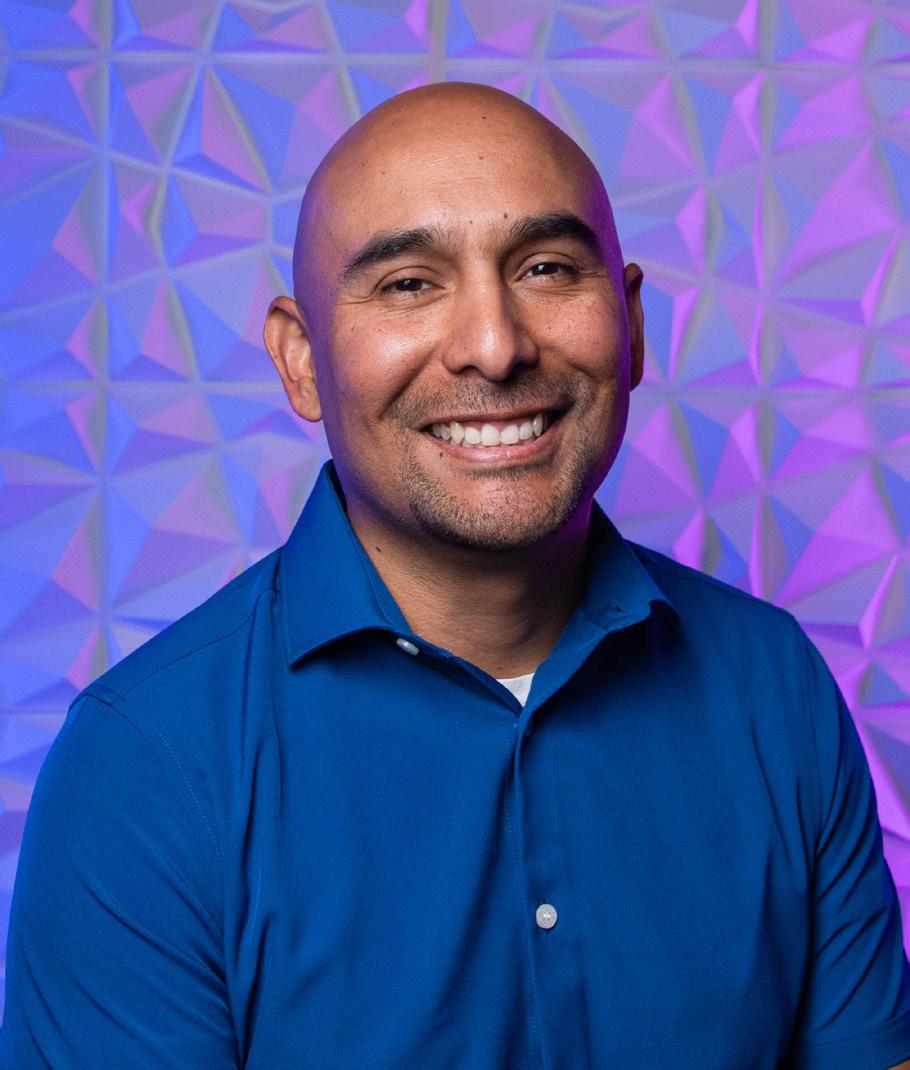
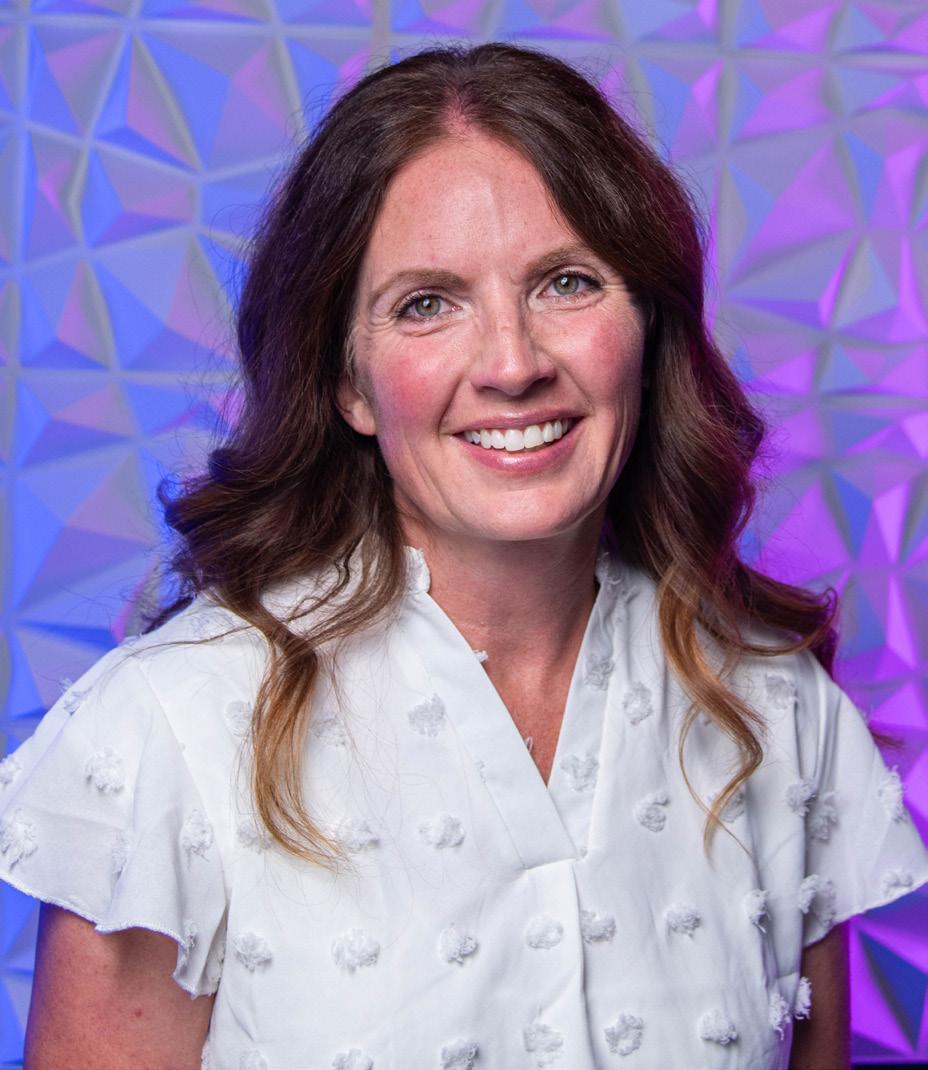
Can you introduce yourself to USU students?
Hi, my name is Ernesto Lopez, and I am a candidate for the Logan city council.
What do you do when not running for office?
When I’m not running for office or when I’m not serving on the city council, I am a father of two young people, married, and my wife is Jenny, who also works here at Utah State University. My full-time job at Utah State University is in extension, and I’m the director of online programs, where we produce online courses that are mostly for the community. We put them to good use, all of the research and expertise that the university gathers, and we package it into online courses and put it at the service of the community.
Why should students care about who is on city council?
You should all care, we should — everybody that lives in Cache County should care who is on the Logan city council, and I’m expanding beyond Logan because Logan is the hub. We have many of the services that people in the county use, and students should care because there is interaction between the university and Logan, and even outside of the university, the things that students get to enjoy and where they live could be affected by how Logan is developing. What kinds of decisions are made on Logan City Council could affect them. I feel like they should care, and I hope that they are engaged. And even if it’s not for me that they vote, they still vote on Nov. 4
Can you introduce yourself to USU students?
My name is Melissa Dahle. I am a Logan resident. I have lived in Logan for about 22 years, but I have lived in Cache Valley my whole life.
What do you do when not running for office?
I’m a mom of four kids. I have, actually, two who are attending Utah State University now. And then, I have one in high school and one in the middle school. They’re all involved in soccer, voice lessons, piano lessons, everything you can name and golf. And so, I spend my time chasing them around, to be honest. I also love to travel myself. I love to golf and spend time with my family.
What makes you stand out from other candidates, and why should students vote for you?
My main thing is that I have a lot of experience within the city. My family calls me a professional volunteer because I have volunteered for a lot of different things throughout my life. I’m currently the chair of the Logan City Parks and Rec Board. I am the chair of Logan High School Community Council and Mount Logan Middle School Community Council, and I’ve also been the chair of the Woodruff Neighborhood Council.
By Carson Frost STATESMAN SENIOR REPORTER
When Utah legislators approved House Bill 449 earlier this year, a first-of-its-kind law allowing universities to directly pay student-athletes, they set in motion an experiment in the country’s rapidly changing college sports economy.
Under the new framework, universities like Utah State University can now directly pay athletes for the use of their name, image and likeness, or NIL. It’s a sweeping shift from the booster-driven collectives that have defined the NIL era since 2021 — and it’s forcing schools, teams and lawmakers alike to reimagine what “amateurism” means in 2025.
“Ultimately, the reason why I ran … HB 449 was to ensure that our Utah universities were in the best place to compete compared to any other university,” said Rep. Jordan Teuscher, sponsor of HB 449, in an interview with The Utah Statesman. “We weren’t trying to necessarily push the needle and be on the cutting edge of anything. But we wanted to make sure that if other states … were moving in a certain direction, that our universities could follow suit and make sure that they could compete at the highest levels.”
Teuscher explained his legislative efforts began with HB 202 in March 2024, a precursor to HB 449.
“It became really the wild, wild west,” he said. “Collectives were springing up. Universities weren’t really sure what to do. They were afraid that they were going to violate NCAA policies because the NCAA hadn’t updated their policies based on these new conditions. Some of our mid-size universities like Utah State or Weber State or Utah Tech … were really afraid of taking action and being able to take advantage of some of the NIL opportunities … because they just didn’t have the resources to go and fight those fights like some of the bigger universities.”
For Utah State, the timing feels critical. Aggie athletics are in an age of strong coach hires, facility upgrades and unprecedented success across many sports, but with fewer resources than Utah’s flagship programs, USU has leaned heavily on its collective — the Blue A Collective — to help athletes navigate NIL deals.
However, with HB 449 enabling universities to pay athletes directly, the role of collectives going forward is unclear.
Few people understand that uncertainty better than Dalton Forsythe, former director of the Blue A Collective and a former USU student-athlete. Forsythe confirmed he has arranged several meetings with the university’s new athletic director Cam Walker as Utah State Athletics works to implement the bill.
Before the bill, the collective operated independently outside the university. Looking ahead, the collective will likely narrow its scope while still supporting Utah State athletes. Forsythe said the collective will focus on supplementing the school’s efforts, particularly for smaller sports or international athletes who need flexibility in compliance and recruiting.
“We can help negotiate NIL deals and keep teams intact where the athletic department doesn’t necessarily have the revenue to do it themselves,” Forsythe said.
Although the bill effectively eliminates the role Forsythe once held in fundraising for the school, he does not oppose the changes.
“In my experience, one of the biggest complaints people had when it came to collectives in general is where we were independent,” he said. “[HB 449] also requires state institutions to go through an audit every five years on their NIL funds. So, there’s some trade-offs, but it gives athletes protection and oversight.”
Forsythe also acknowledged Utah State faces structural disadvantages compared with BYU and Utah in revenue and NIL resources. While HB 449 levels the playing field against states without similar laws, it won’t make Utah State immediately competitive with its wealthier in-state rivals.
“Internally, everyone shares the same revenue cap, but we can’t even generate enough to hit ours. BYU and Utah are far surpassing theirs,” he said.
Still, Forsythe sees opportunity for the university to engage donors more effectively, noting the law allows contributions to flow directly to sport-specific or general NIL funds, giving fans a more tangible connection to the teams.
Despite all the changes, Forsythe is confident the collective will remain relevant.
“We’re in a good place to start,” Forsythe said. “The short-term plan is to work closely with the school and fundraise for recruiting and retention funds. Long term, we’ll focus on revenue-generating NIL deals for programs that need it most.”
Jason Winfree, an economics professor at the University of Idaho and a leading researcher on sports economics, suggested Utah’s new NIL model could have implications beyond the state. Having advised as amicus curiae in multiple Supreme Court cases on sports economics, Winfree sees potential benefits for mid-major schools.
“Most people have this sense that player pay … is going to help the big schools because they have more money,” he said. “That’s true to some extent, but the bigger schools were already getting the better athletes through better coaches, facilities and recruiting. But you have to think about this in terms of what paying the players accomplishes for small schools. They’re not going to get the best athletes, but maybe they’ll get more really good athletes to give them a better chance to compete.”
Regarding the role of collectives like Utah State’s Blue A, Winfree believes they can still be influential by coordinating closely with universities.
“To the extent that you want to build a more successful athletic program, you should be working with those groups to get funds to where they go most efficiently,” he said. “If the collective can find the right mechanism to go through the university’s fundraising system, it shouldn’t be a problem.”
Winfree emphasized economic incentives will continue to drive university behavior.
“Universities are masters at moving money around,” he

said. “If athletic teams generate revenue through ticket sales, merchandise or increased enrollment, they will find a pot of money to fund NIL.”
He also stressed that fans and donors shouldn’t be overly pessimistic of the current changes.
“Universities and athletic departments are in the business of trying to create the best teams they can,” Winfree said. “Making this more formalized through the university shouldn’t be dramatically negative.” Looking forward, Winfree remains optimistic about the long-term evolution of NIL.
“The health of college athletics is always going to depend on demand,” he said. “NIL policies push more revenue to players at the expense of coaches and facilities, but budgets can be reallocated. I’m not at all concerned about the economic viability of college sports as long as people want to watch it.”


Carson Frost is a transfer student from Denver studying journalism. He loves writing, making music, hitting the gym and taking road trips.
By Rory McNeill STATESMAN REPORTER
Former high school football champion and Utah State University student body president Doug Fiefia has transitioned to a new role in Utah’s politics. His diverse experiences from both USU and beyond have helped shape his approach to politics.
According to his campaign website, Fiefia is a firstgeneration American. His parents moved from Tonga to the United States in the 1970s, settling in South Jordan. According to Fiefia, he learned about the “American Dream” through his parents’ hard work setting the example for him.
“There’s a grit to people who go to work early in life. I grew up seeing my parents put everything on the line, juggling several jobs to create better opportunities for their kids,” Fiefia said in a 2020 interview with the Huntsman News. “Because of their sacrifices, I don’t sit back and wait for opportunities to come to me. I go out and get them.”
He carried this mentality into college, where he became very involved in various organizations that opened the door to his interest in politics.
The Utah Statesman requested to interview Fiefia by phone, but due to his schedule, the interview was conducted through email.
“My interest in politics really started as a student at Utah State University,” Fiefia wrote. “I served in student government and eventually as Student Body President, where I had the chance to lobby on behalf of students at the State Capitol. We worked on projects that directly benefited the university, like funding for buildings and programs, and even had a resolution read on both the House and Senate floors. Those experiences taught me how the process really works and how to navigate it effectively.”
In addition to being the USU student body president, Fiefia served two terms as the president of the Utah Student Association, acting as a representative for students at all of the universities and colleges in the state of Utah. According to Fiefia, his time as president in both capacities helped grow his understanding of how politics and his role as a representative work.
“Being student body president taught me to listen first and lead second,” Fiefia wrote. “At USU, I represented thousands of students with different needs and perspectives, so collaboration and empathy were key. That experience shaped how I approach policy today by focusing on bringing people together, finding common ground, and understanding how decisions impact families, students, and businesses in real ways. It also taught me to stay grounded and transparent because trust is everything in leadership.”
Despite his high-level roles within the university, he said some of the most important lessons he learned in his time on campus had to do with character.
“I learned that leadership isn’t about titles, it’s about
relationships and trust. I also learned how to manage competing priorities and criticism without losing sight of the bigger goal,” Fiefia wrote. “Every challenge was a lesson in humility, patience, and teamwork. Those lessons carry over every day in my work as a legislator, where success comes from building coalitions and staying focused on the people you serve.”
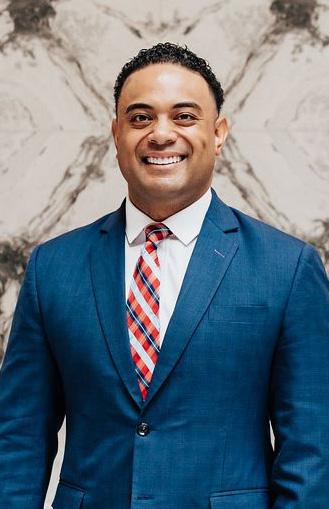
you trust your team and do your part. The sport also taught me how to lead by example and how to keep moving forward, even when things don’t go your way.”
He also highlighted how the high-pressure environment of football helped him prepare for his time in the high-stress environment of politics.
“Big moments on the field prepare you to perform under pressure. You learn to focus, block out distractions, and execute the plan,” Fiefia wrote. “In politics, you’re often under public scrutiny or making tough decisions that impact a lot of people. That background helps me stay calm, keep perspective, and approach high-pressure moments with confidence and composure.”
Fiefia now serves on the Utah House of Representatives for the 48th District, which covers Herriman, South Jordan and Riverton. With elections right around the corner, he invites everyone, especially students, to be active in their local politics and stand up for issues that are important to them.
“If something feels off or could be improved, speak up,” Fiefia wrote. “Reach out to your legislators, show up to committee hearings, or even send a simple email. You have no idea how much influence that can have. Leaders pay attention when students organize, share real experiences, and push for solutions.”
Though Fiefia’s time at Utah State shaped his perspective on politics and his role as a leader and representative of others, he said many of the most important lessons he carries with him come from his time on the football field.
Fiefia had a prolific high school football career at Bingham High School, where he led the team to their first state championship in over 60 years. Fiefia has found many ways in which his football career helped prepare him for his political career.
“Football taught me accountability, discipline, and resilience. You learn to depend on others and show up for your team no matter what,” Fiefia wrote. “In politics and business, it’s the same. You succeed when
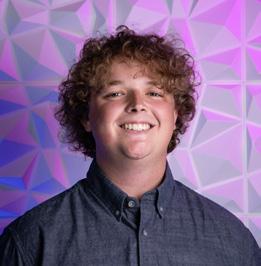
Rory McNeill is a sophomore from Rocklin, California studying mechanical engineering. He loves Aggie sports, skiing, golf and writing music.
— rory.mcneill@usu.edu
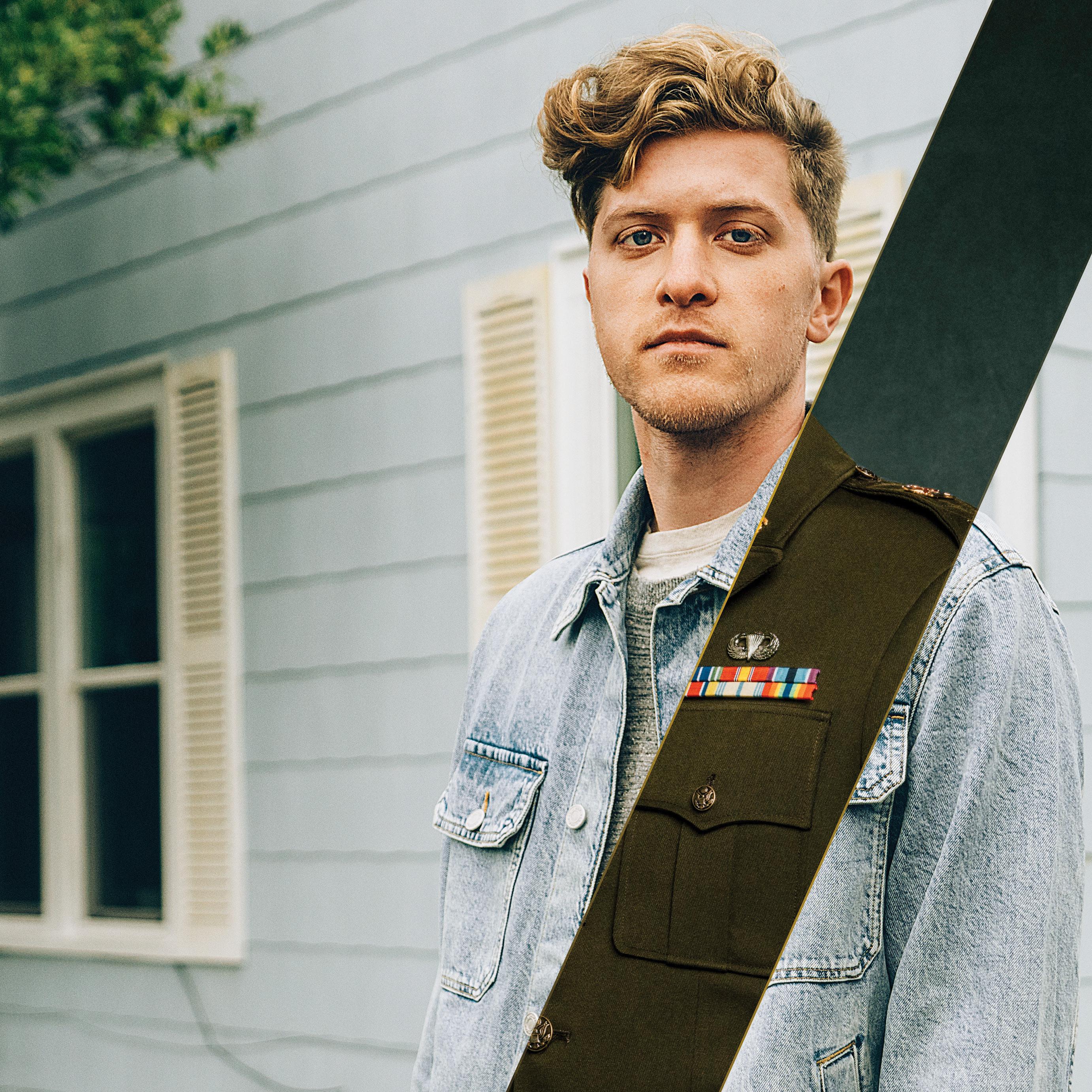
By Colin Hastings USUSA
You’ve heard all the reasons you should vote before: Do it for your country, because it’s your civic right and responsibility, so your voice is heard, to make the changes you want to see. Yes, that is all true, and all are valid reasons to vote. But far too often, we feel unheard and see no changes. Far too often, even when we vote, we feel ignored. This year, in Utah’s municipal elections, I am not asking you to vote because it’s your right or duty as an American — I am asking you to vote so we can become too big to ignore. I get it, a lot of us are fatigued after last year’s presidential election. After countless debates, ads on TV and fights with friends or family, getting involved politically so soon can be the last thing you want to do. However, this year’s municipal and local elections give us something different: a chance to step away from the chaos and culture wars of national politics and to focus on what shapes our daily lives. These local elections help us decide things about our housing, transportation and safety — the very things we use and pay for every single day.
I also understand feeling ignored and question what one vote is going to do. However, when we vote, and when we do it together, it becomes impossible for those currently in power, and those seeking it, to ignore us. For example, in 2023, two college students running for city council in Ithaca, New York campaigned directly to their fellow students, even listening to them and promising to extend quiet hours for parties. Both won their elections narrowly because of student turnout. In Alabama, a group of fraternity and sorority students called the Machine have become so big, they’re even known to influence local and statewide politics.
I won’t ask you to join a Greek organization or run for office yet, but I do want students to have our say and make our impact. It is worth remembering Utah State students
make up a third of Logan’s population, enough to decide almost any local race we decide to weigh in on. When we show up, we are able to change outcomes and work towards achieving a city where students are the priority. For example, Logan currently allows only three unrelated people to live in one unit. However, if we were to vote for candidates open to raising that, we would be able to increase housing availability and lower rent prices for students across the city.
If you’re not registered to vote in Logan or are unsure how to get involved, reach out.
As your student advocate vice president, my job is to get your concerns to our local and state government and get students civically engaged. Feel free to email me at studentadvocatevp.ususa@usu.edu or submit a MyVoice, which can be found under “Forms” in your MyUSU account.
To qualify for a mail-in ballot, make sure to register to vote at vote.utah.gov by Oct. 24. And remember, don’t vote just because it’s your civic duty. Vote because when we all vote, we can’t be ignored.
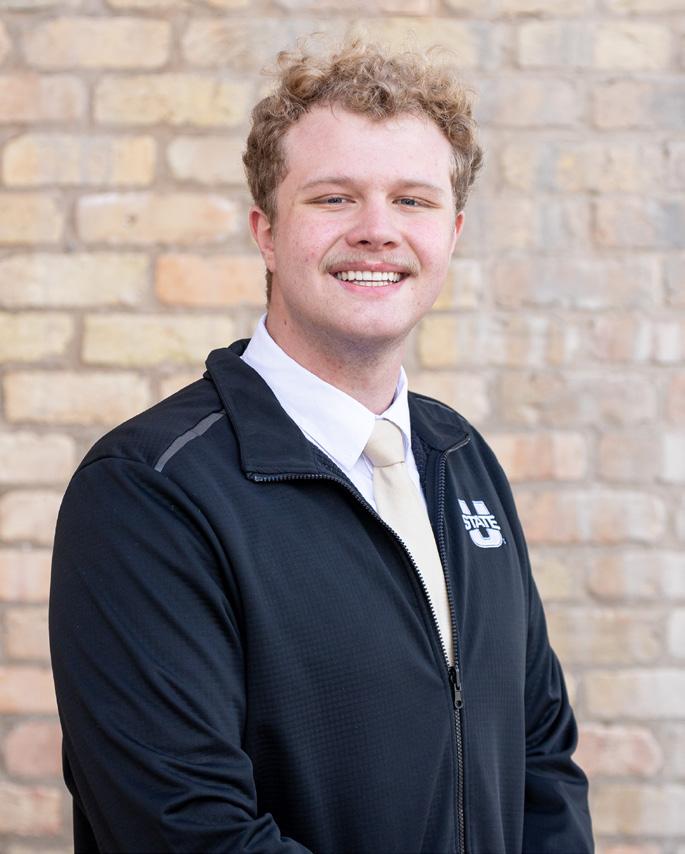
By Max Murray AGGIE RADIO
When you think of free speech, what does “free” really mean to you? Does it mean it comes with no associated costs? Does it mean it’s accessible to anyone at any time? Is it without bounds?
Most importantly, if all speech is free, is all speech inherently equal?
College radio, in many ways, is a free speech speakeasy. On the surface, college radio might look like business as usual, a campus organization with rigid guidelines and face to protect. But give that door a rhythmic knock and a small window slides open to reveal some of the most raw and authentic thoughts on campus. Granted, when you’re an FCC complaint station, speech is never completely “free.”
Aggie Radio 92.3 FM KBLU-LP Logan gives DJs the opportunity to play their favorite music, and music itself has always been a beacon of free speech. It has long been used to share alternative perspectives, speak out against injustice and give people the power to express what can’t always be said outright.
Equally, if not more important, are the voices these student DJs personally bring to the community. DJs have the chance to speak not only about music but also what’s most important to them.
Aggie Radio DJs are always encouraged to share personal experiences, opinions and thoughts on-air.
DJs are also welcome to invite guests onto their shows to share perspectives, have open dialogue and give space to voices that might otherwise go unheard.
On Oct. 3, the world celebrated College Radio Day, and this year’s theme was “Tune In To The People,”
a call to highlight underrepresented voices. At Aggie Radio, we embraced that theme by collaborating with USUSA clubs and organizations to make the event more interactive and engaging. Broadcasting live for six hours from the Hub stage in the TSC, the event featured 12 different DJs and nine interviews with campus club representatives. This semester, Aggie Radio is hosting a record-high of nearly 60 live radio shows between Monday and Friday. That means each week brings around 60 hours of music, conversation and live dialogue from students.
In a time when free speech is often mislabeled, misused and misunderstood, college radio looks to continue being a platform for authentic messages and voices.
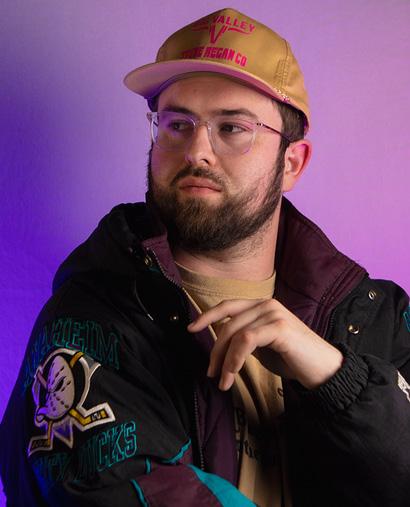

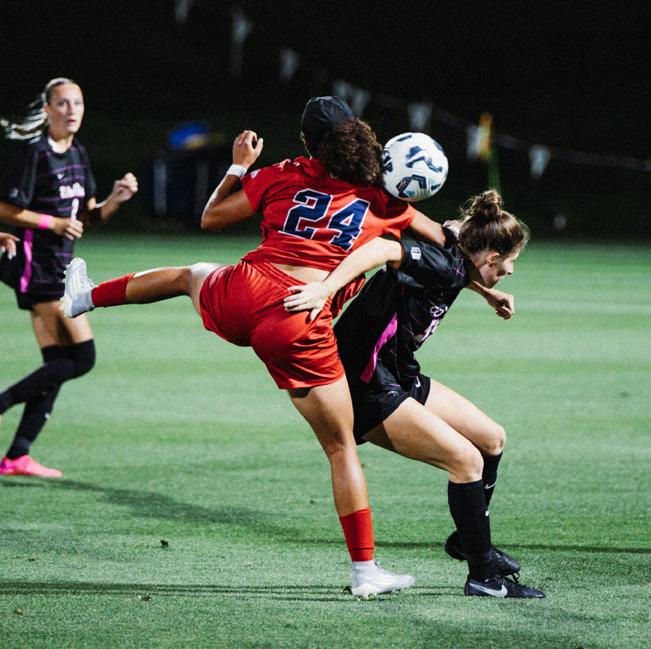
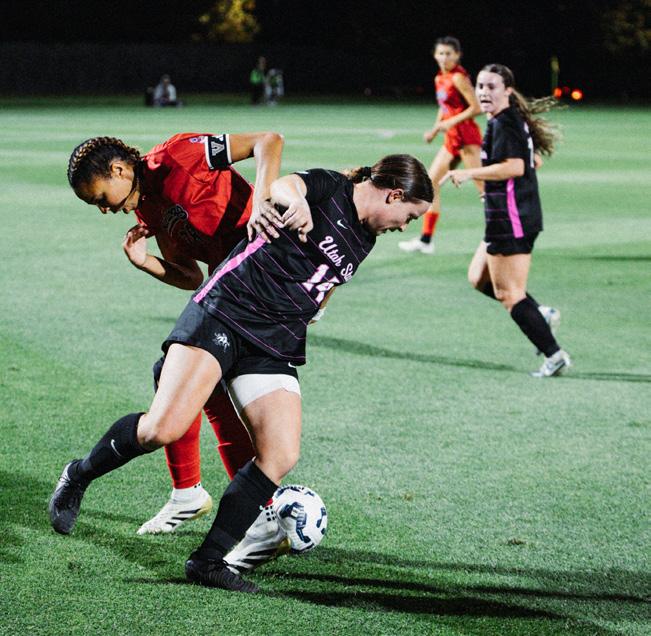

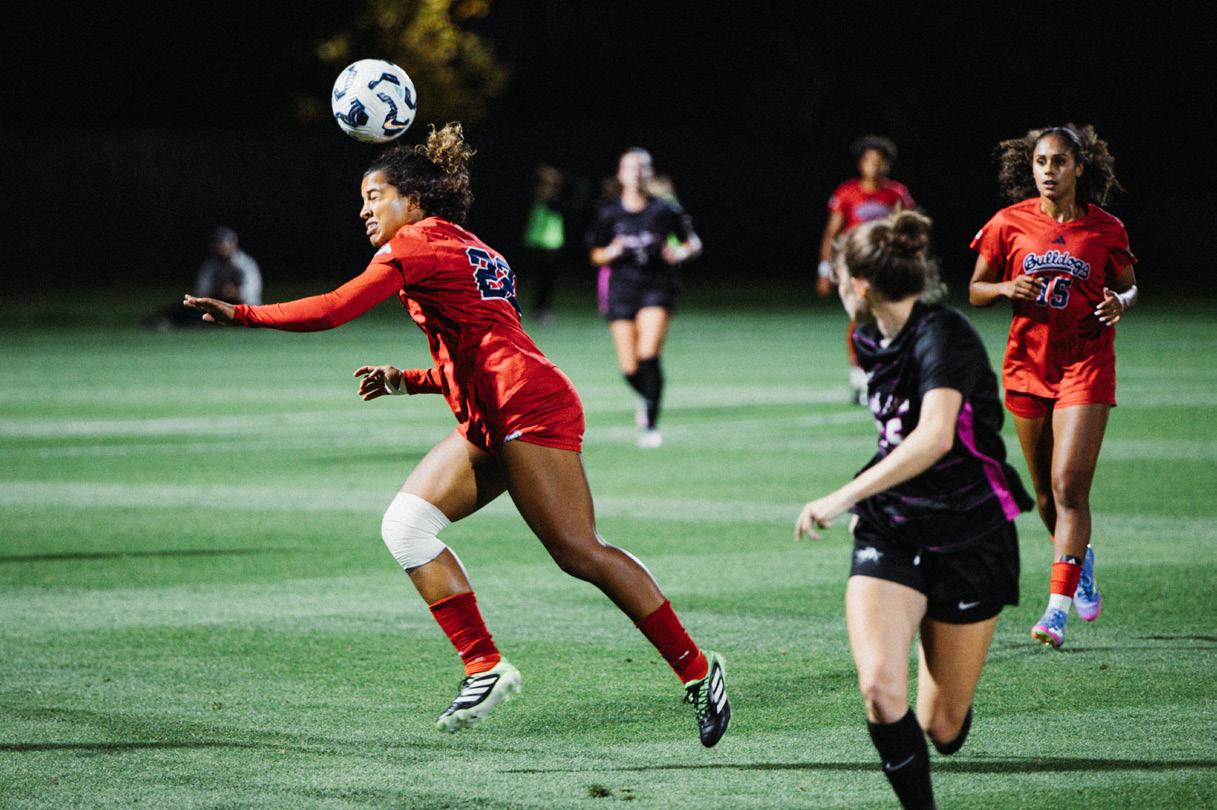

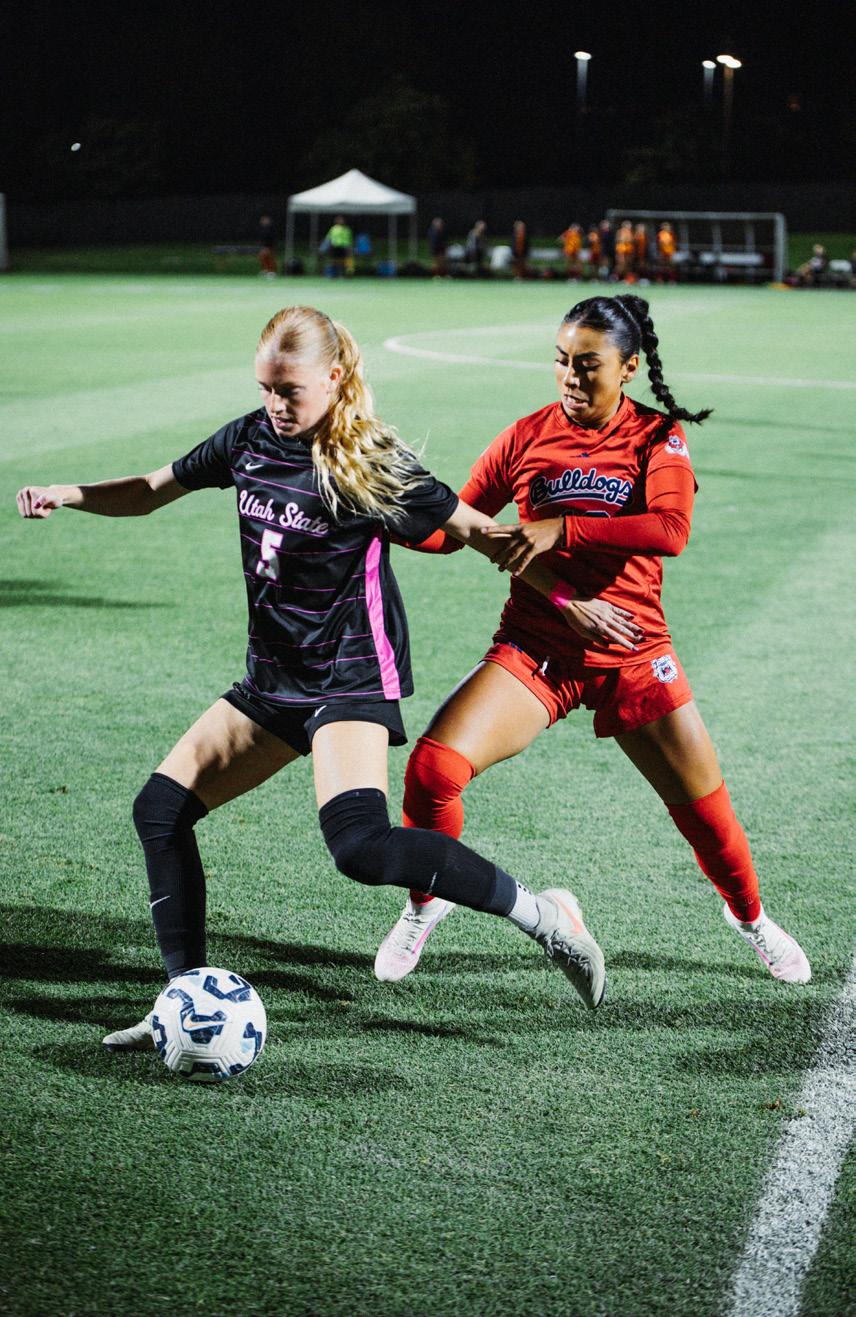
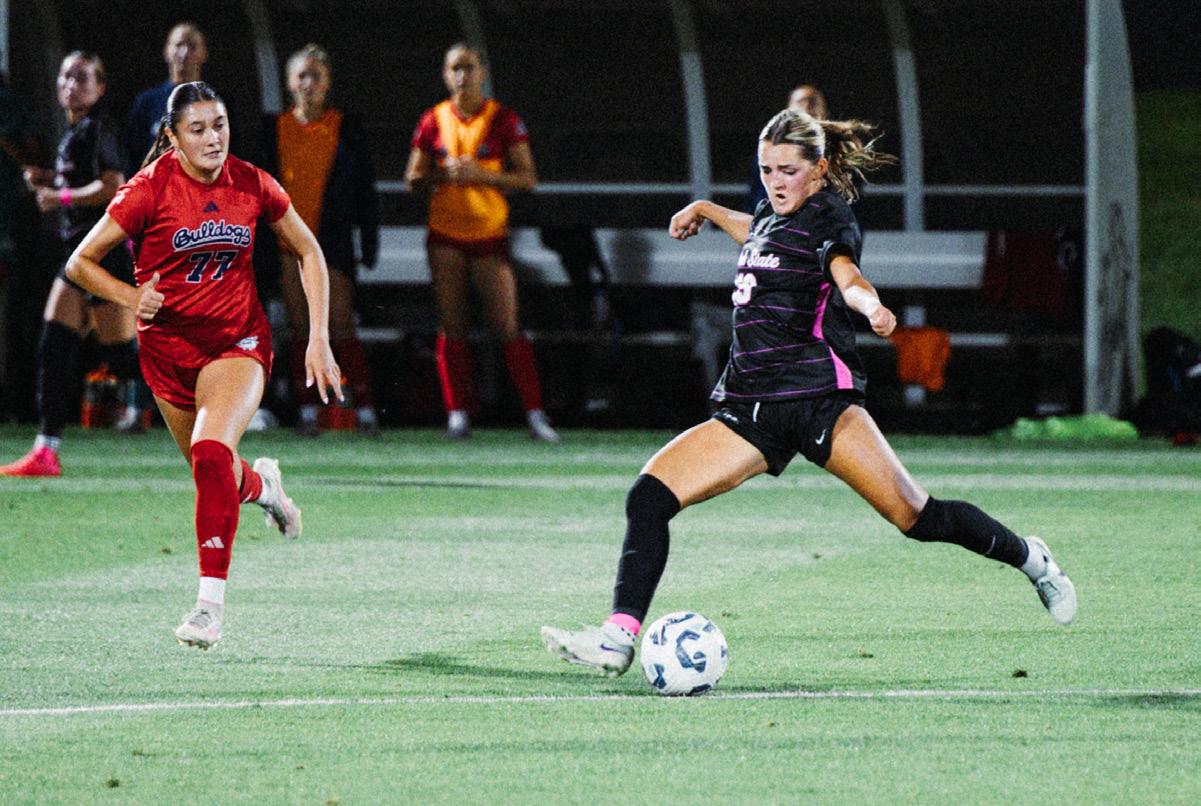
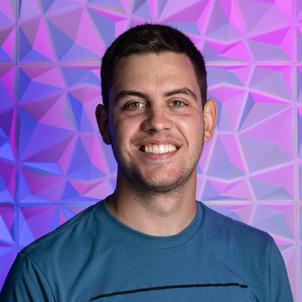
Dane Johnson is a mechanical engineering student at USU. When not studying, he can be found exploring new places with his camera or on an evening stroll with his wife.
a02340940@usu.edu
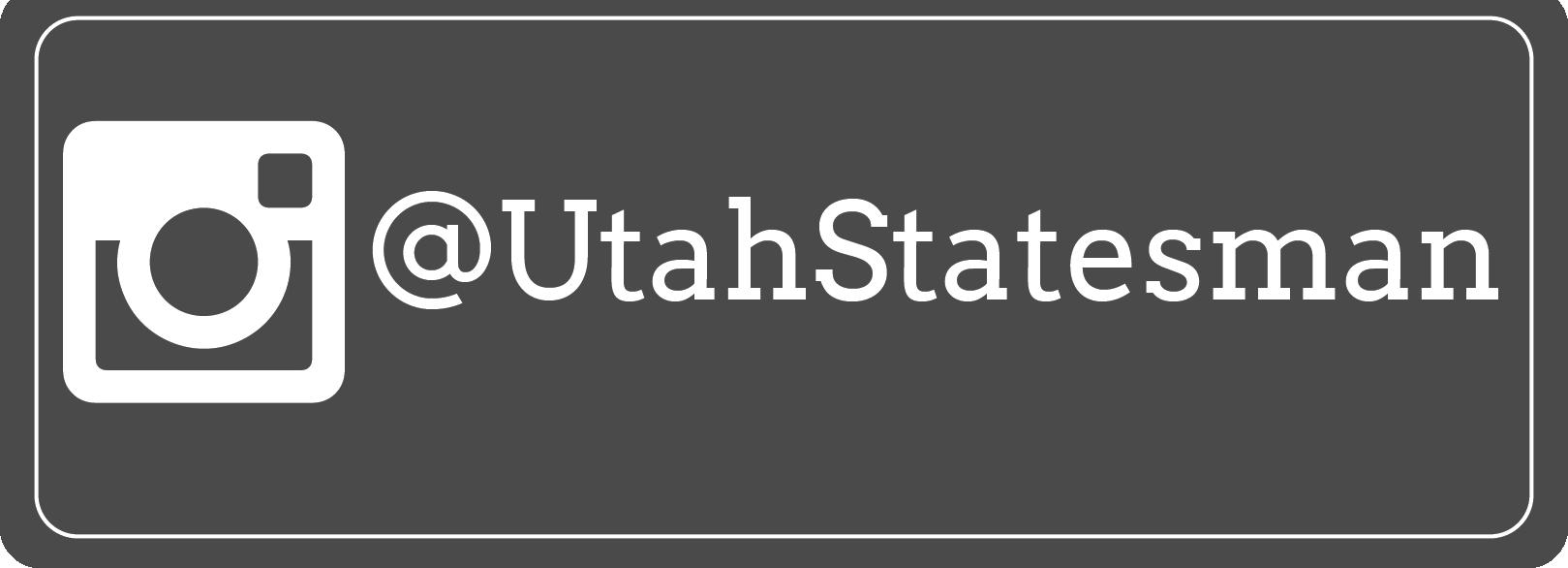
Last week’s solution:

Sudoku puzzles are provided by www.sudokuoftheday.com.

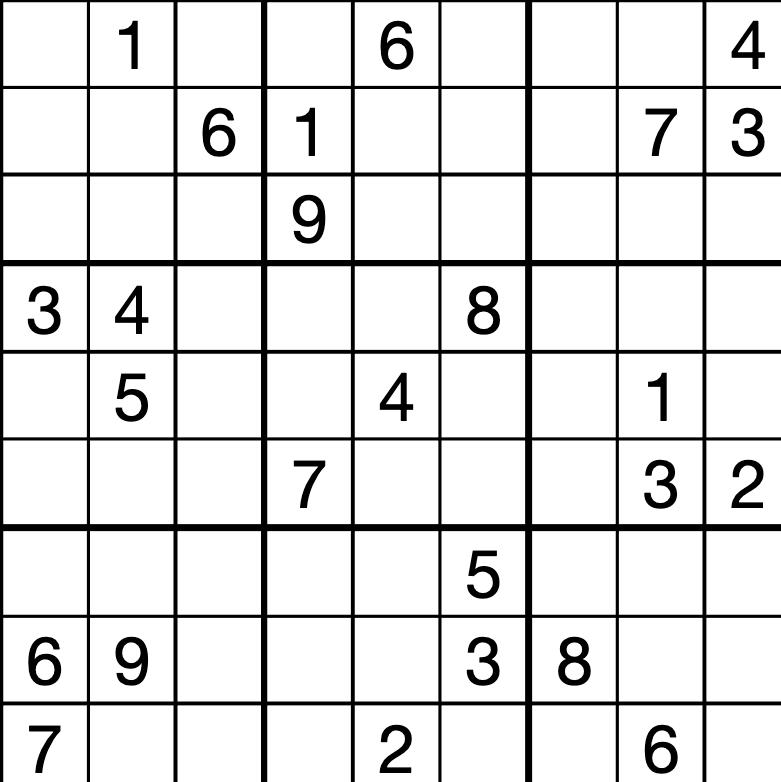


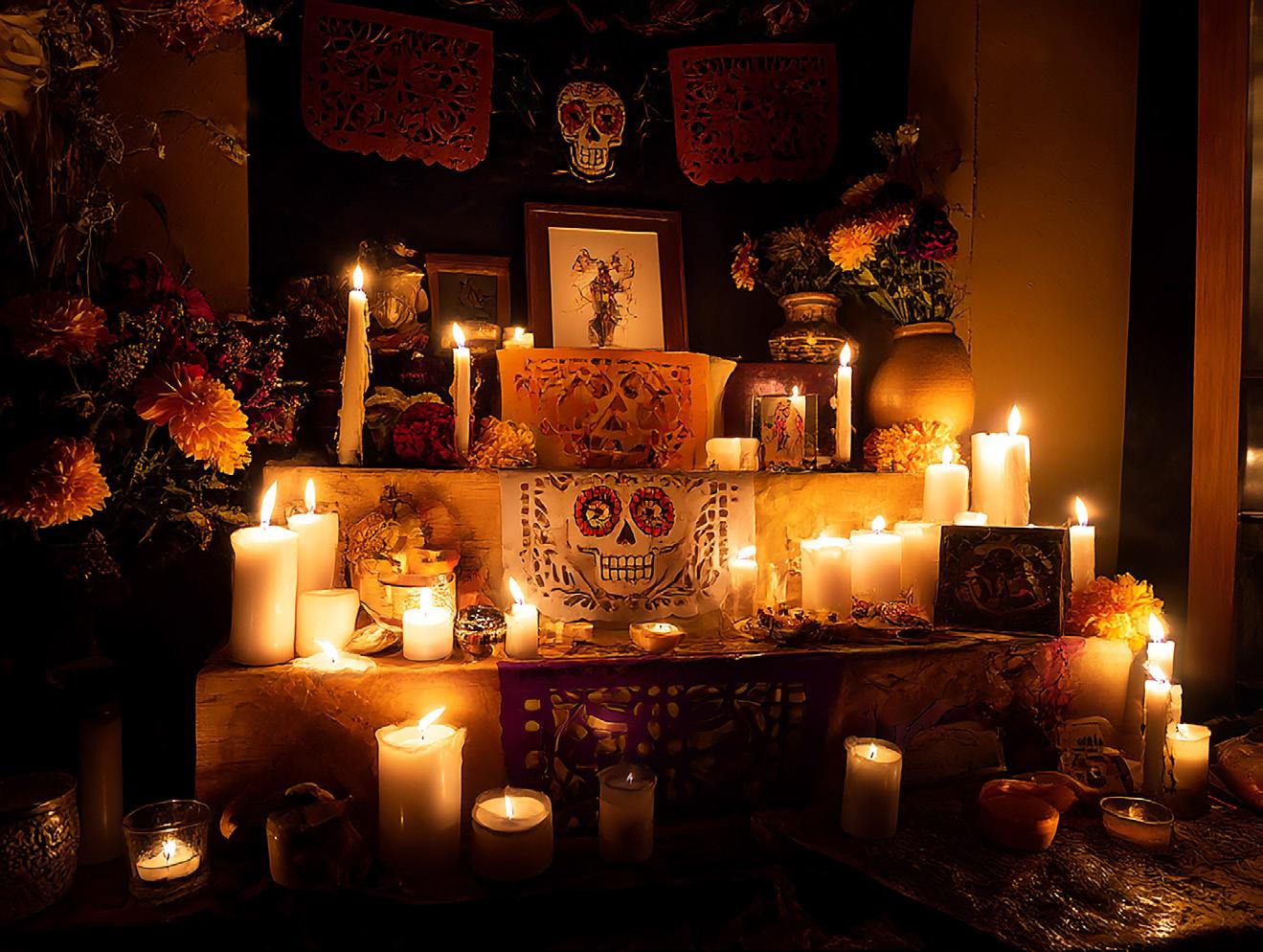
th
Join us October 30 at the David B. Haight Center, USU, at 12:00 p.m.
A campus and community event honoring Día de Los Muertos, rooted in Pre-Columbian indigenous traditions across Latin America.
The celebration begins at the David B. Haight Center with educational displays and presentations on the origins, meaning, and diverse traditions of Día de Los Muertos.
Following the presentation, attendees will participate in a traditional procession across campus. We invite you to join or feel free to observe the procession!
The procession ends at Nora Eccles Harrison Museum of Art enjoy Pan de Muerto, hot chocolate, and explore themed exhibits.
Scan the QR Code to see where the procession will be passing by!
Join us October 24 in the TSC Ballroom, USU th from 6:30 p.m. to 10:00 p.m.
Learn how Día de los Muertos (Day of the Dead) is celebrated throughout Latin America.
Engage in cultural practices through ofrendas, music, and more.
Enjoy a vibrant night of tradition, community, and connection.
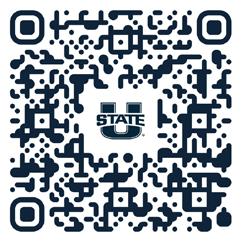
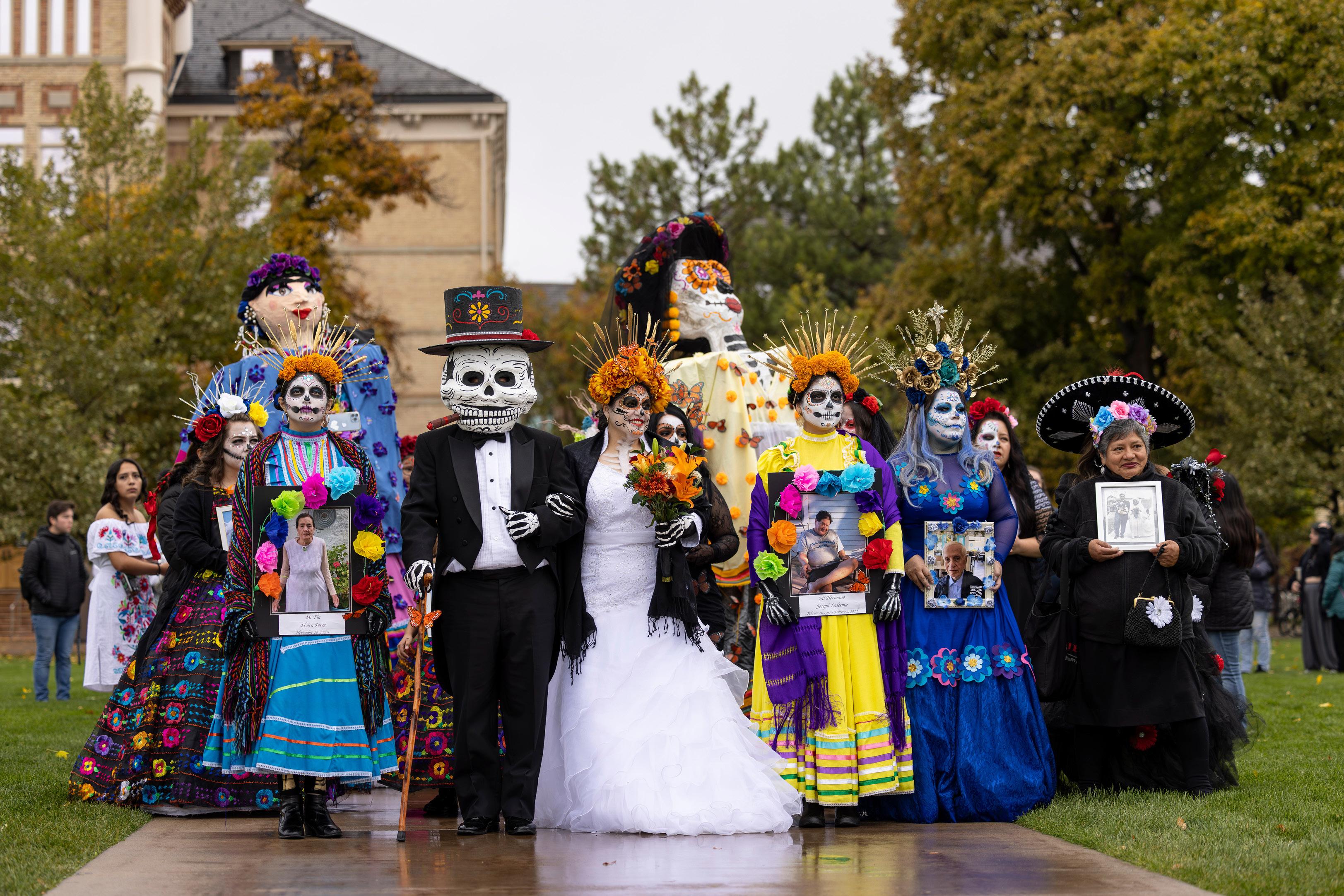
Questions? Call us at (435) 797-0446
We're here Monday–Friday, 8:00 AM to 5:00 PM
and 314
Scan the QR code for free tickets to the event!
center for community
Follow us ! MyUSUgroup
